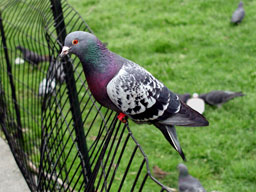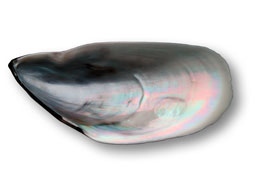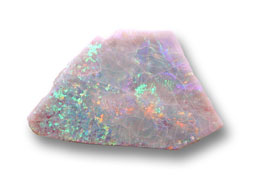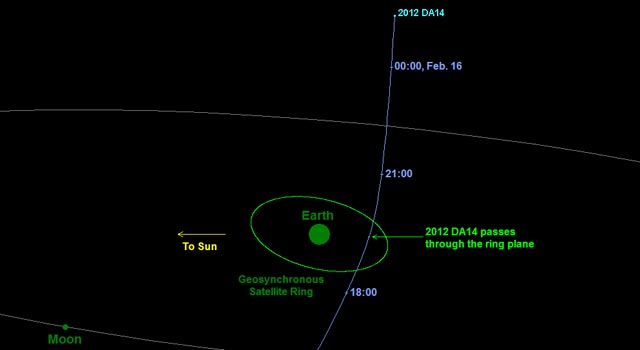5th day, 5th month, 25th year. Get it?
News and opinions from Glenn Elert
Square Root Day
Posted Monday, 5 May 2025
The Physics
Posted Tuesday, 31 December 2019
An excerpt from Motion, a section in The Physics Hypertextbook.
- Physics
- Physics is the study of the fundamental nature of all things.
- Prior to the Renaissance, the most significant works in mechanics were those written in the 4th century BCE by the Greek philosopher Aristotle of Stagira (384–322 BCE) — these were Mechanics, On the Heavens, and The Nature or in Greek Μηχανικά (Mekhanika), Περί ουρανού (peri uranu), and Φυσικῆς ἀκροάσεως (Fysikes akroasis). Although the first section of every general physics textbook is about mechanics, Aristotle’s Mechanics probably wasn’t written by him and won’t be discussed here. On the heavens will be discussed later in this book.
- The Nature is Aristotle’s work that’s most relevant to this book. That’s because it’s the origin of the word physics. The full name Φυσικής ακρόασις (Fysikes akroasis) translates literally to "Lesson on Nature" but "The Lesson on the Nature of Things" is probably more faithful. The Nature acquired great stature in the Western world and was identified almost reverently by academics as Τὰ Φυσικά (Ta Fysika) — The Physics. In this book Aristotle introduced the concepts of space, time, and motion as elements in a larger philosophy of the natural world. Consequently, a person who studied the nature of things was called a "natural philosopher" or "physicist" and the subject they studied was called "natural philosophy" or "physics". Incidentally, this is also the origin of the words "physician" (one who studies the nature of the human body) and "physique" (the nature or state of the human body).
Aristotelis. Physica. Ex Recensione Immanuelis Bekkeri. Seorsim Edita, 1843
Square Root Day
Posted Monday, 4 April 2016
4th day, 4th month, 16th year. Get it?
Possible North Korean nuclear weapons test
Posted Tuesday, 5 January 2016
Possible North Korean nuclear weapons test at 8:30 PM EST today. Statement based on near surface earthquake in area of previous tests. M5.1, 19km ENE of Sungjibaegam, North Korea, depth=10.0 km
Welcome back
Posted Wednesday, 21 October 2015
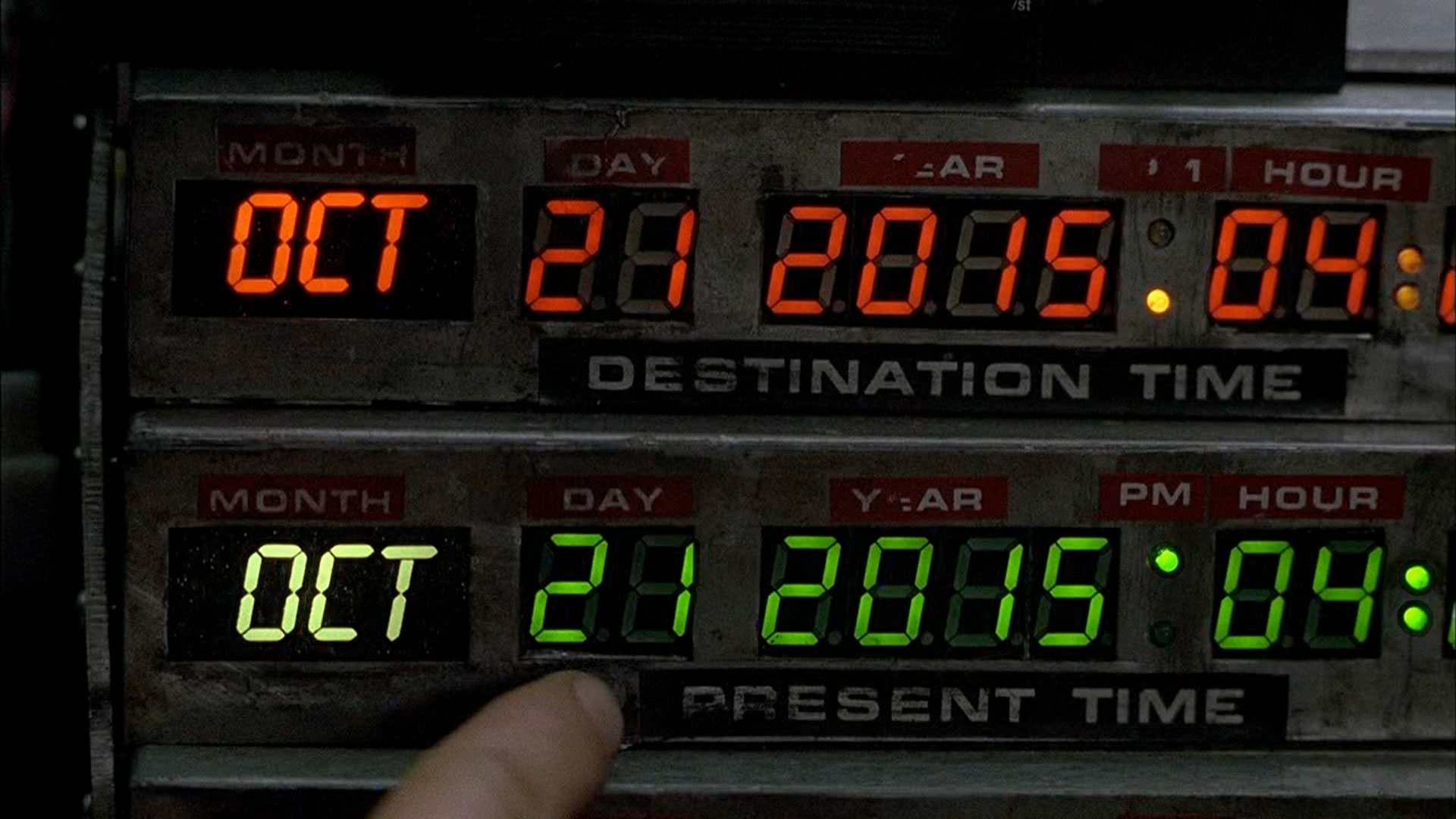
DSCOVR the moon pass in front of the earth
Posted Monday, 10 August 2015
A NASA camera aboard the Deep Space Climate Observatory satellite (DSCOVR) captured a unique view of the moon as it moved in front of the sunlit side of Earth. DSCOVR is located at the L1 Lagrange point between the Earth and the sun approximately four times farther from the Earth than the moon. The three bodies form a line — sun, DSCOVR, Earth. The moon wanders between DSCOVR and Earth for a few hours once every month, which is what this time lapse animation shows.
DSCOVR has two primary missions:
- Monitoring the side of the sun facing the Earth to provide advanced warning of solar storms that might affect power grids, communications systems, and satellites.
- Monitoring the side of the Earth facing the sun to provide measurements of the radiation reflected and emitted by Earth for atmospheric, environmental, earth, and ocean scientists.
The second objective is the one that’s getting all the attention right now. Scientific observations provide the best data when they are consistent, regulated, or controlled. Placing DSCOVR at L1 means it always sees the full hemisphere of the Earth illuminated with the sun always directly behind it. These initial Earth images show the effects of sunlight scattered by air molecules, giving the images a characteristic bluish tint. Technicians are working to reduce this effect making it easier to see landforms and water features. Once this is taken care of, new images will be made available every day and posted to a dedicated web page. Check back at the DSCOVR website in September.
Another thing to notice in this time lapse is how dark the moon looks. That’s not because it’s in shadow. (The moon is lit the same way as the Earth is — head on.) It’s because the moon is actually much darker than the earth. We seem to think the moon is fresh, clean, and white like a bowl of cottage cheese. (Cottage cheese is a type of cheese that isn’t aged so it’s immature, unripe, or green in a sense.) We think it’s white because we usually see it against the inky black background of the night sky. White, black, and gray are relative colors. Objects that emit, transmit, or reflect all wavelengths of light with similar intensity look white if they are the among the brightest things in our field of vision. The things that are noticeably less bright than this will look gray and the things that are significantly less bright will look black. If the brightest thing is the moon, then the moon looks white. If the brightest thing is the Earth and the next brightest thing is the moon, then the moon looks gray.
Interstellar was a let down
Posted Wednesday, 17 December 2014
My biggest problem was Anne Hathaway and her comment about love being a multidimensional technobabble. Had any real astronauts been in that situation they would’ve recognized that something was wrong. “Hey guys. I’ve got this irrational notion. I thought I’d use it to guide us through this critical moment where rational thinking is essential. Love is all you need. Whad’dya think?” They should’ve blown her out the airlock for a comment like that.
I did not enjoy Matt Damon’s meltdown followed by the destruction of the rotating space habitat (don’t remember what they called it). It was a horrid intrusion that was telegraphed to us for what seemed like minutes. “Hey Coop. I’m going to tell you this really creepy story, real slow like and you’re going to listen to it and not know what my motive is. Then I’m going to fuck everything up irrevocably. You don’t see this coming, do you?” Nothing worse than sitting there watching a formulaic movie trope play out in slow motion. Pure agony.
So then Matt Damon crashes into the rotating space habitat. The thing should’ve fallen apart. Spacecraft aren’t constructed like terrestrial buildings. The thing didn’t look any more robust than the ISS, which is basically a bunch of aluminum cans draped over a giant bicycle frame. Then they spun it up to 10-20 rpm. Ummmm, no.
The future humans built a tesseract just so that Matthew McConaughey could get a trans-temporal message to his daughter and save the Earth. Why didn’t they just save the earth? They had enough technology to build a 5D funhouse for Mr. Alright Alright but not enough to save the Earth. Logic meltdown!
It was too long. I didn’t pay attention to the times when I bought the ticket. I kept wondering when something was going to happen. Then I thought I was witnessing actual time dilation.
Really loud music that obscured the dialog. That’s so the audience will know that something physically or emotionally powerful is occurring. Because you know, we really aren’t smart enough to figure that kind of thing out. Mash that organ keyboard!
One physics error. Inside Cooper station when the kids were playing baseball. The batter hits a pop up and the ball traveled straight up across to the opposite side and crashed through a skylight in a detached house (because, when all that remains is a few thousand humans in rotating cylinders in space, we’ll all live the wasteful suburban lifestyle that destroyed the original Earth). There was no Coriolis effect. The ball should have travelled on an arc.
I did enjoy the theme of runaway fungal infestation. That totally seems believable. I realize this somewhat contradicts my earlier statement about suburban living being the death of the earth. Some critter figures out how to remake the earth into its own personal paradise. Do you think fungi give a crap about us? Corn rust 1, Vertebrates 0.
Journey to the Moon, part 3
Posted Sunday, 15 December 2013
The Yutu (玉兔) lunar rover successfully separated from the Chang’e-3 (嫦娥三号) lander early in the Chinese morning at 4:40 AM Sunday Bejing Time on 15 December 2013 (3:40 PM Saturday, 14 December 2013, Eastern Time). These 3 animated gifs show the process as broadcast on China Central Television (from a blogpost by Emily Lakdawalla of The Planetary Society).
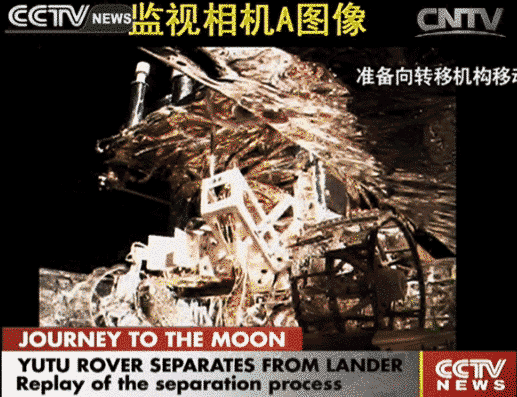 |
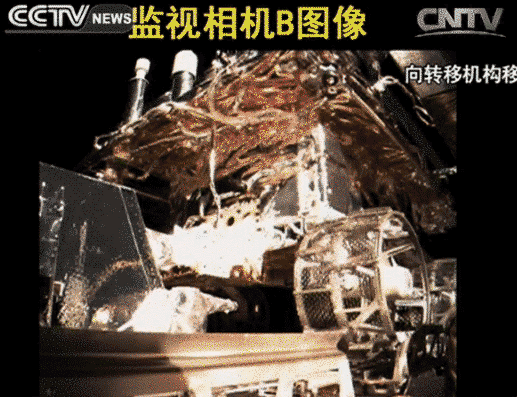 |
 |
Journey to the Moon, part 2
Posted Saturday, 14 December 2013
 Source: China Central Television
Source: China Central Television
The China National Space Administration successfully landed the Chang’e 3 on the surface of the moon on the edge of Sinus Iridium (the Bay of Rainbows) on Saturday, December 14, 2013 at 8:31 AM Eastern Time (9:31 PM Beijing Time). Change’e 3 consists of a lander and a rover called Yutu. This is the first Chinese rover ever and the first soft landing on the moon since the Soviet Union’s Luna 24 mission in 1976. Chang’e (嫦娥) is the Chinese goddess of the moon and Yutu (玉兔) is her pet rabbit.
Journey to the Moon, part 1
Posted Sunday, 1 December 2013
 Source: China Central Television
Source: China Central Television
The China National Space Administration succesfully launched the Chang’e 3 mission to the moon from Base 27 near Xichang, in Sichuan Province on Sunday, December 1, 2013 at 12:30 Eastern Time (1:30 AM December 2 local time). Change’e 3 consists of a lander and a rover called Yutu. This is the first Chinese rover ever and the first soft landing on the moon since the Soviet Union’s Luna 24 mission in 1976. Chang’e (嫦娥) is the Chinese goddess of the moon and Yutu (玉兔) is her pet rabbit.
Water has a high specific heat
Posted Sunday, 27 October 2013
Woman Burned by McDonald’s Hot Coffee, Then the News Media. In 1992, Stella Liebeck spilled scalding McDonald’s coffee in her lap and later sued the company, attracting a flood of negative attention. It turns out there was more to the story.
I remember hearing the non-stand-up-comedian version of this story (i.e., the truth) 20 years ago. McDonald’s used extremely hot water — hotter than anything you’d use at home — to extract every last molecule of flavor form their coffee grounds. The lawyer for McDonald’s made it sound like it was a flavor choice, but it’s really an economic choice. McDonald’s can’t make enough money making coffee the way you’d do it at home, so they have to use a small scale industrial process.
Everyone realizes that coffee is hot. Not everyone realizes that McDonald’s coffee is unusually hot. Despite the dumb jokes about McDonald’s hamburgers lasting forever (like culinary mummies) most people assume that the food you get at McDonald’s is similar to the food you’d prepare at home. What is McDonald’s but a bunch of stoves and microwave ovens. The most exotic piece of equipment they own is a deep fryer. Not many people have that in their home.
If McDonald’s gave you a cup of oil straight from the fryer, what would you assume? I think most people would think, "Here’s something I can hold in my hand and put in my mouth. It’s food and they gave it to me. Yum. Yum." Well McDonald’s doesn’t do that. This would be dangerous. But they will serve you a cup of coffee at over 200 °C. Now repeat the previous statement. "Here’s something I can hold in my hand and put in my mouth. It’s food and they gave it to me. Yum. Yum. GAAAAAAARRRRRRRGGHHHHH!"
I can tell you from personal experience that McDonald’s coffee is too damn hot. No one can drink it straight. It is obviously too hot. I have never spilled a full cup on my lap and I never hope to. Unfortunately, I like coffee and and eat at McDonald’s occasionally. It’s just sheer luck that I haven’t seriously scalded myself.
The Nobel Prize in Physics 2013
Posted Tuesday, 8 October 2013
 Source: CERN Courier
Source: CERN Courier
The 2013 Nobel Prize in Physics was awarded this morning to François Englert and Peter W. Higgs for the theoretical work that let to the prediction and confirmation of the Higgs boson — or in the words of the Nobel Prize Committee "for the theoretical discovery of a mechanism that contributes to our understanding of the origin of mass of subatomic particles, and which recently was confirmed through the discovery of the predicted fundamental particle, by the ATLAS and CMS experiments at CERN’s Large Hadron Collider".
The theory behind the mechanism that gives mass to elementary particles was simultaneously proposed by six scientists in 1964: Peter Higgs working independently; François Englert and Robert Brout; and Gerald Guralnik, Carl Hagen, and Tom Kibble. Robert Brout died in 2011 at the age of 82. Potential Nobel laureates are required to be alive while the Nobel Committee makes their selection. (The biologist Ralph Steinman died between the time of his selection and the time of the announcement.) Any Nobel prize can only be split between a maximum of 3 laureates. Guralnik, Hagen, and Kibble are all still alive, but that would bring the total to 5, which is not allowed.
Some credit should also be given to the team of scientists, mathematicians, and engineers at the Large Hadron Collider. The two teams working on the Higgs boson were the CMS Collaboration (CMS stands for "Compact Muon Solenoid") and the ATLAS Collaboration (ATLAS is a labored contraction of "A Toroidal LHC Apparatus"). Each team consists of several hundred to a few thousand people, depending who you decide to count and for what purpose. When the discovery of the Higgs boson was announced formally in the December 2012 issue of Science the list of collaborators spanned more pages that the reports did — at least it would have had the authors’ names been printed on actual paper. Complete author lists were included as supplementary material that appeared in the online edition of the magazine only.
- prediction papers (Physical Review Letters. Vol. 13 (1964))
- Broken Symmetry and the Mass of Gauge Vector Mesons, F. Englert and R. Brout
- Broken Symmetries and the Masses of Gauge Bosons, Peter W. Higgs
- Global Conservation Laws and Massless Particles, G.S. Guralnik, C.R. Hagen, and T.W. Kibble.
- Higgs Boson: One Page Explanation. Physics World. Vol. 6 No. 9 (September 1993)
- Reposted articles with free access at Fermilab
- Original articles hidden behind a paywall at Physics World
- discovery announcement (4 July 2012)
- CERN experiments observe particle consistent with long-sought Higgs boson, PR17.12
- Latest Results from ATLAS Higgs Search, A Toroidal LHC Apparatus
- Observation of a New Particle with a Mass of 125 GeV, Compact Muon Solenoid Experiment
- discovery papers (Science. Vol. 338 No. 6114 (21 December 2012))
- Breakthrough of the Year: The Discovery of the Higgs Boson, Adrian Cho
- The Higgs Boson
- Journey in the Search for the Higgs Boson: The ATLAS and CMS Experiments at the Large Hadron Collider, M. Della Negra, P. Jenni, and T.S. Virdee
- A New Boson with a Mass of 125 GeV Observed with the CMS Experiment at the Large Hadron Collider, The CMS Collaboration
- A Particle Consistent with the Higgs Boson Observed with the ATLAS Detector at the Large Hadron Collider, The ATLAS Collaboration
Geometric Optics
Posted Tuesday, 24 September 2013
Light travels in straight lines with relatively little diffraction. This is the fundamental assumption of geometric optics.
 |
 |
 |
Iridescence
Posted Saturday, 14 September 2013
The 2013 Ig Nobel Prizes
Posted Thursday, 12 September 2013
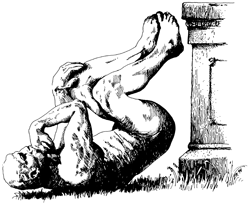
The 2013 Ig Nobel Prize Ceremony was held today in the Sanders Theatre at Harvard University in Cambridge, Massachusetts. Ig Nobel Prizes are awarded to research that "first makes you laugh, then makes you think". The winners of this year’s Physics Prize were Alberto E. Minetti, Yuri P. Ivanenko, Germana Cappellini, Nadia Dominici, and Francesco Lacquaniti for discovering that some people would be physically capable of running across the surface of a pond — if those people, and that pond, were on the moon.
- Humans Running in Place on Water at Simulated
Reduced Gravity. PLoS ONE . Vol. 7, No 7 (18 July 2012): e37300. - Complete list of Ig Nobel Prize winners in Physics in The Physics Hypertextbook
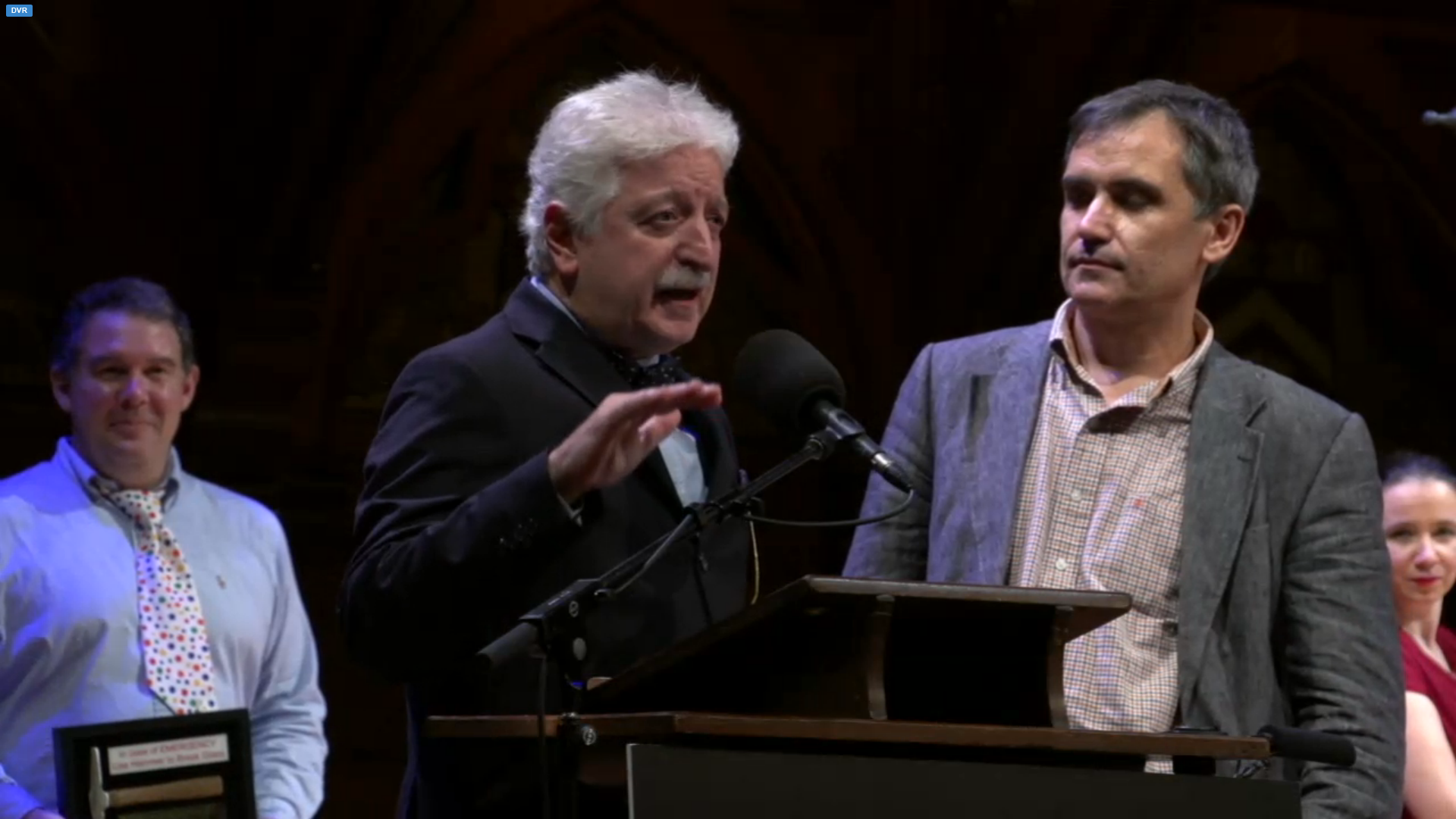 |
 |
NASA LADEE go for launch at 11:27 EDT
Posted Friday, 6 September 2013
Fastest man-made spinning object
Posted Thursday, 29 August 2013
A team of researches at the University of St Andrews in Scotland claim to have made the fastest spinning object to date — a birefringent crystalline vaterite sphere 4.4 μm in diameter (one fifteenth the diameter of a human hair) spun with circular polarized light to a peak rotational frequency of ten million rotations per second. (A wash machine on spin cycle makes about twenty rotations per second, for comparison.)
Vaterite is a polymorph of calcium carbonate (CaCO3), but one that I never heard of before. Some more familiar polymorphs of CaCO3 are calcite (the mineral that makes up limestone) and aragonite (the mineral that mollusks use to build their shells). Vaterite, calcite, and aragonite are birefringent, which means that light rays will follow two slightly different paths through these transparent materials.
The spheres they manufactured are so small that they can be held in place and then spun with the pressure of laser light. The spinning was accomplished using circular polarized light — essentially light that spins. Something about the birefringence of the vaterite gives the circular polarized light something to grab onto. Pump out the air to reduce the drag and let the fun begin.
An initial rotation rate of 110 Hz is recorded at atmospheric pressure, which increases to a stable rotation rate of 5 MHz for a pressure of 0.1 Pa. Decreasing the pressure further can lead to rotation rates of up to 10 MHz, although, at such rates, the particle is lost in a short period of time. We remark that this represents, to date, the largest measured rotation rate for a ‘man-made’ object.
The title for fastest rotating object was previously held by a flake of graphene (a single atom thick layer of graphite) suspended in an electric field and spun at something greater than 1 MHz. This article is hidden behind a paywall, but there’s a free copy at arXiv.org and a nice little summary at phys.org.
Watch the upcoming asteroid flyby live on NASA TV
Posted Wednesday, 13 February 2013
NASA Television will provide commentary starting at 2:00 PM EST (19:00 UTC) on Friday, 15 February, during the close, but safe, flyby of a small near-Earth asteroid named 2012 DA14. At the time of its closest approach to Earth at approximately 2:25 PM EST (19:25 UTC), the asteroid will be about 17,150 miles (27,600 kilometers) above Earth’s surface — closer than geostationary telecommunication satellites.
Higgs boson announced
Posted Wednesday, 4 July 2012
Compelling evidence was first presented today for the existence of the higgs boson — the fundamental particle responsible for giving mass to other fundamental particles. The announcement was made by Joe Incandela and Fabiola Gionatti at the European Center for Nuclear Research (CERN). The mass of the higgs boson has been determined to be 125.3 ± 0.6 GeV/c2. It’s existence has been confirmed with a statistical significance of five standard deviations (5σ). Present in the audience were Peter Higgs and Robert Brout, two of the six theoretical physicists who proposed the mechanism behind the higgs boson in 1964.
Leap Second Day
Posted Saturday, 30 June 2012
Today is longer than yesterday and tomorrow by one second.
The hyperfine transition is the basis of International Atomic Time (TAI). By definition, the outermost electron in an ordinary cesium 133 atom cycles through this transition 9,192,631,770 times in one second.
International Atomic Time (abbreviated TAI after the French Temps Atomique International) began at midnight GMT on the first day of 1958 and has continued advancing forward at the rate of one second every 9,192,631,770 periods of the hyperfine transition in 133Cs. TAI is maintained by the Bureau International des Poids et Mesures (BIPM) in Paris, which periodically averages the time kept by various atomic clocks around the world. The BIPM then disseminates correction factors needed to synchronize these clocks with the master clock in the Observatoire de Paris.
Coordinated Universal Time (abbreviated UTC) is the basis of legal time throughout the world. All local civil times differ from UTC by either a whole number of hours or an odd number of half hours, but never by any other amount. One second of Coordinated Universal Time is the same as one second of International Atomic Time, but UTC and TAI are slightly out of step. TAI marches forward uniformly, while UTC is adjusted from time to time to keep it synchronized with the earth’s rotation.
The earth is not an effective timekeeper. For most of the last two hundred years the mean solar day has been slightly longer than the 86,400 s currently defined by the International System. Universal Time UT, or more specifically UT1, is in effect the mean solar time. It is continuous (i.e. there are no leap seconds) but has a variable rate because of the Earth’s non-uniform rotation period. It is needed for computing the sidereal time, an essential part of pointing a telescope at a celestial source.
When UT1 lags too far behind UTC, a leap second is inserted at the end of the day before January 1 or July 1 as appropriate. When this happens, 23:59:59 is followed by the unusual time of 23:59:60 before turning over to 00:00:00 and starting the next day. In the unlikely event that UT1 were to lead UTC (that is, if the earth’s rate of rotation were to increase) the provision exists for the insertion of a negative leap second. Were this to ever occur, 23:59:58 of one day would be followed by 00:00:00 of the next, skipping 23:59:59 altogether. In any case the absolute difference between UTC and UT1 must never exceed 0.9 s.
| year | month | offset | year | month | offset | year | month | offset | ||
|---|---|---|---|---|---|---|---|---|---|---|
| 1971 | n/a* | 1986 | 23 | 2001 | 32 | |||||
| 1972 | July | 11 | 1987 | 23 | 2002 | 32 | ||||
| 1973 | January | 12 | 1988 | January | 24 | 2003 | 32 | |||
| 1974 | January | 13 | 1989 | 24 | 2004 | 32 | ||||
| 1975 | January | 14 | 1990 | January | 25 | 2005 | 32 | |||
| 1976 | January | 15 | 1991 | January | 26 | 2006 | January | 33 | ||
| 1977 | January | 16 | 1992 | July | 27 | 2007 | 33 | |||
| 1978 | January | 17 | 1993 | July | 28 | 2008 | 33 | |||
| 1979 | January | 18 | 1994 | July | 29 | 2009 | January | 34 | ||
| 1980 | January | 19 | 1995 | 29 | 2010 | 34 | ||||
| 1981 | July | 20 | 1996 | January | 30 | 2011 | 34 | |||
| 1982 | July | 21 | 1997 | July | 31 | 2012 | July | 35 | ||
| 1983 | July | 22 | 1998 | 31 | 2013 | 35 | ||||
| 1984 | 22 | 1999 | January | 32 | 2014 | 35 | ||||
| 1985 | July | 23 | 2000 | 32 | 2015 | 35 |
Are leap seconds even necessary?
- In seven or eight centuries the difference between TAI and UT1 will be about an hour.
- By the year 5000, day and night will have reversed; that is, 12 noon will occur in the middle of the night and 12 midnight will synch up with the midday sun.
What would be so wrong with that? Does it really matter what number we assign to a position of the sun in the sky?
In 1582 Pope Gregory XIII managed to extract ten days from the calendar. On 4 October 1582 the Catholic world went to sleep. When they woke up it was 15 October 1582. By 1752 the protestant nation of England and her American colonies also accepted the change. (They needed to add 11 days to catch up.) In 1873 Japan made the switch. (They needed 12 days.) Then Russia in 1917 and China in 1949. (13 days.) The Greek Orthodox Church is possibly the only European agency that has not accepted this change (although the nation of Greece made the switch in 1923).
I think the big thing is that everyone agrees what time (or day) it is. Not that the time is any particular number. Time is a social construct, remember.
Higgs boson upcoming announcement
Posted Monday, 25 June 2012
CERN (the European Center for Nuclear research) will hold a scientific seminar at 9:00 CEST (3:00 AM EDT) on 4 July 2012 to deliver the latest update in the search for the higgs boson. It will be available via webcast accompanied by plain language interpretations from physicists accessible in blogs and chats from the webcast site.
The higgs boson is the particle that is thought to be responsible for giving mass to other elementary particles like quarks, the electron and even the higgs itself. This is the last particle predicted by the standard model of particle physics. If they announce the discovery of the higgs at this seminar, the standard model will reign supreme once again. If they announce something different … well it doesn’t mean the standard model is dead, just that they haven’t found the higgs yet. The particle that became known as the higgs boson was predicted independently and nearly simultaneously in 1964 by Peter Higgs (in England); François Englert and Robert Brout (in Belgium); and Gerald Guralnik, C. R. Hagen, and Tom Kibble (an Anglo-American team). Five of the six authors are still alive. (Robert Brout died in 2011.) 48 years is a long time to wait for vindication.
 View the webcast at CERN View the webcast at CERN |
Space Shuttle Enterprise to barnstorm New York City Friday morning
Posted Thursday, 26 April 2012
Weather permitting, on 4/27/12 between 9:30 AM and 11:30 AM, NASA’s 747 Shuttle Carrier with Space Shuttle Enterprise mounted on top, will fly at low altitudes around the Statue of Liberty and the Intrepid Sea, Air and Space Museum before landing at JFK Airport. It will also be accompanied by two T-38 aircraft serving as photo support
 Text and image source: Notify NYC.
Text and image source: Notify NYC.
Curiosity (Mars Science Laboratory) ready to launch
Posted Saturday, 26 November 2011
Mars Science Laboratory launches Saturday morning
Posted Friday, 25 November 2011
Mission: Mars Science Laboratory, Curiosity Rover
Launch Vehicle: Atlas V
Launch Site: Cape Canaveral Air Force Station, Fla.
Launch Pad: Space Launch Complex 41
Launch Time: 10:02 a.m. EST
Description: The Mars Science Laboratory is a rover that will assess whether Mars ever was, or is still today, an environment able to support microbial life and to determine the planet’s habitability.
- Mission website: marsprogram.jpl.nasa.gov/msl
- Watch live on NASA TV




